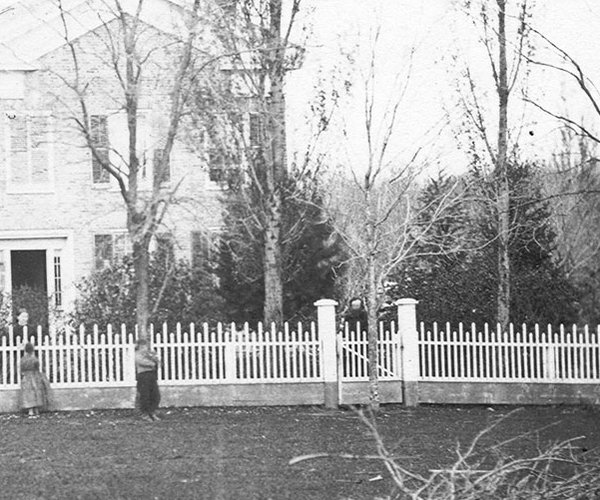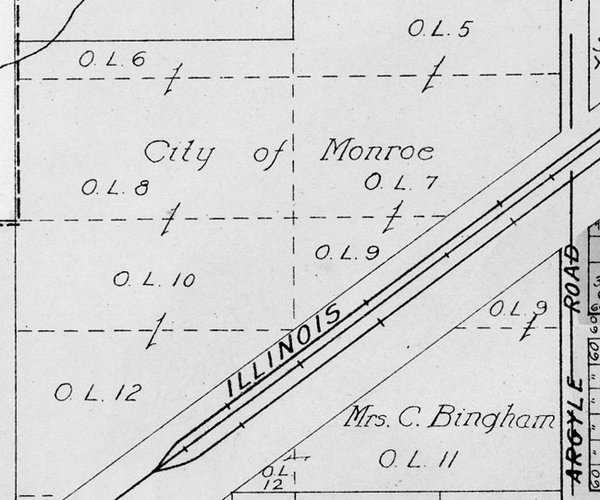Even though the rural students had been attending the 120 rural schools of the county for several decades, the first time there was a formal ceremony for all of the rural graduates “who had successfully passed the County diploma examination” was on June 30, 1915. County Superintendent John N. Burns made the announcement of a ceremony in the Monroe Evening Times on June 24. The graduates were not only from the various rural schools, but also from the state-graded schools of the county, including Browntown and Juda.
For the first time in the history of Green County, the diplomas were distributed to those who earned them at 1:30 on Wednesday afternoon in the high school assembly room. Superintendent Burns sent notice to the 63 students who passed the examination and urged that “their parents shall take a day off and come to Monroe for the purpose of attending the graduation ceremonies, and it is expected a majority of them will do so.” An appropriate program for the day had been arranged.
Burns wrote, “the idea of graduation day for rural schools is new in Green County, but it seems to me that after your hard work in the rural and state-graded schools, you are entitled to something more than your diploma.
“I have arranged a program for the afternoon, which will be interesting to you and to all who are interested in your future success. Your parents and friends are especially urged to be present at this, the first graduation exercises for rural and state-graded graduates.” The exercises were also open to the general public and an invitation was extended for all to attend in an article on June 28.
The exercises were held in the high school assembly room and started promptly at 1:30. As suggested by Superintendent Burns, many parents took the day off and came to the city to participate. “As a result, the attendance has been a most pleasing one. Many of the teachers from the rural schools were also in attendance.”
The ceremony was quite simple starting with an invocation by Rev. W. H. Hartman followed with a violin solo by Nellie Kundert, who had graduated from Monroe High School the previous year. Professor Charles Jahr addressed the students before Eva M. Atherton, a 1909 graduate of Monroe High School, did a reading. Superintendent Burns then presented a diploma to each of the graduates. America was sung, followed by a benediction by Rev. Hartman. Rev. Hartman was the pastor at Grace Lutheran from 1907 to 1917. Prof. Jahr was from the Brodhead schools and was “serving during the summer as a member of the Green County Training School,” predecessor of the Green County Normal School [also known as the Green County Teachers College]. The names of 60 graduates were printed in the newspaper, only 16 of whom were males.


It is unknown why there had never been a graduation held for the rural graduates previously. The high school where the 1915 graduation ceremony was held had been built in 1906. The “prized certificates” for the 75 rural graduates had been mailed out to the 1914 graduates the previous year. Unfortunately, an additional 40 who were supposed to graduate in 1914 failed to pass the examination on four subjects given by the superintendent.
The program for 1916 was held in the same location as the previous year on Wednesday, June 14, two weeks earlier than the first commencement. It began with the invocation by Rev. A. A. Krug followed by a song sung by the 75 graduates. “Life in the Country” was presented by Frances M. Crow followed by a violin solo by Howard Divan. Miss Neva Gapen, Monroe High School junior, presented “Patsy,” a reading for which she won the state declamatory contest. A trio, consisting of Misses Knight, Mathers, and Collentine, then performed “LaPaloma Hungarian Dance.” An address was given by C. L. Harper, chief clerk of the state superintendent’s office in Madison, before Principal Charles H. Dietz presented a diploma to each graduate. The trio performed again; this time it was “Barcarolle” from Tales of Hoffman. Before the benediction, “America” was sung. This was the first time that many in attendance had heard Miss Gapen’s speech.
The third rural commencement was held in the gymnasium of the newly built Lincoln School on Tuesday afternoon, June 19 for the 102 graduates. This was “the largest class of eighth graders, who ever finished the rural schools of the county and, as evidence of their serious educational intentions, most of them contemplate entering some high school next fall. A large assemblage of the graduates’ families and friends were present at the exercises, which opened at 1:30.” At this time an eighth grade education was enough for many of these students, especially the boys because they might follow in their fathers’ footsteps, as farmers or cheesemakers.
In 1918 the nine graduates from St. Victor School were included in the ceremony, which brought the total graduates who were given their diplomas at the Lincoln gymnasium to 128. “A large number of relatives from the vicinity motored to Monroe for the program, which included “an interesting thrift talk” by Thomas Boyce and an address by Assistant State Superintendent, Dr. Carter.
I remember my eighth grade graduation from Enterprise School in Clarno Township, which was held at the current Monroe Middle School [then the Junior High School] auditorium on Thursday evening, May 28, 1962. Commencement was at 8:00 p.m. with a preliminary concert by the Monroe Junior Band at 7:30. This had to be easier for the parents to attend during that busy time of year. It was shortly after this that the rural schools started consolidating, so it was probably one of the last of those “promotional exercises” to be held here.
— Matt Figi is a Monroe resident and a local historian. His column will appear periodically on Saturdays in the Times. He can be reached at mfigi48@tds.net or at 608-325-6503.





